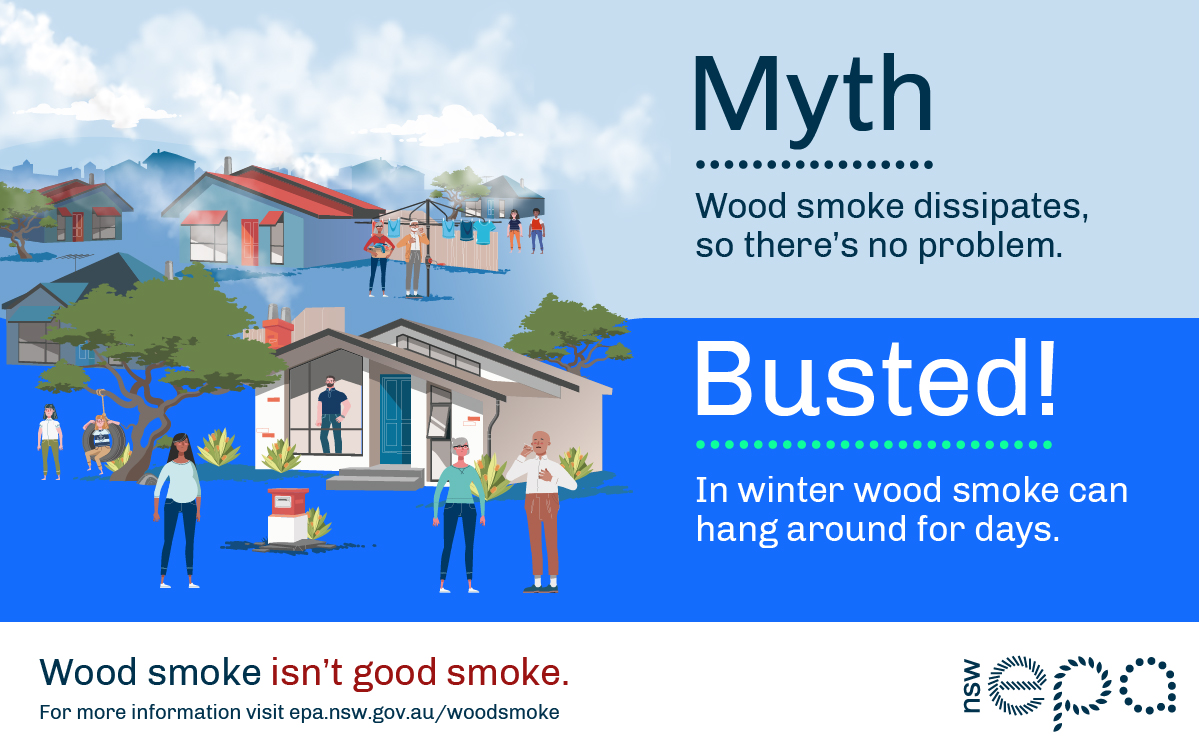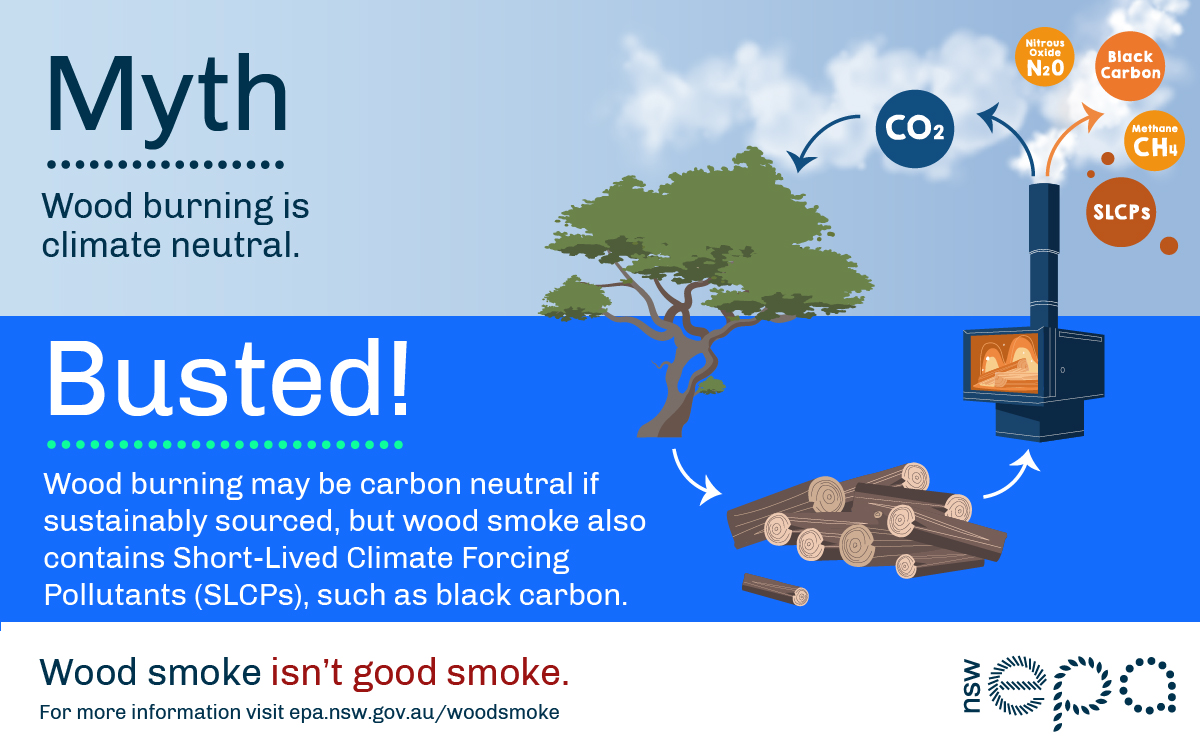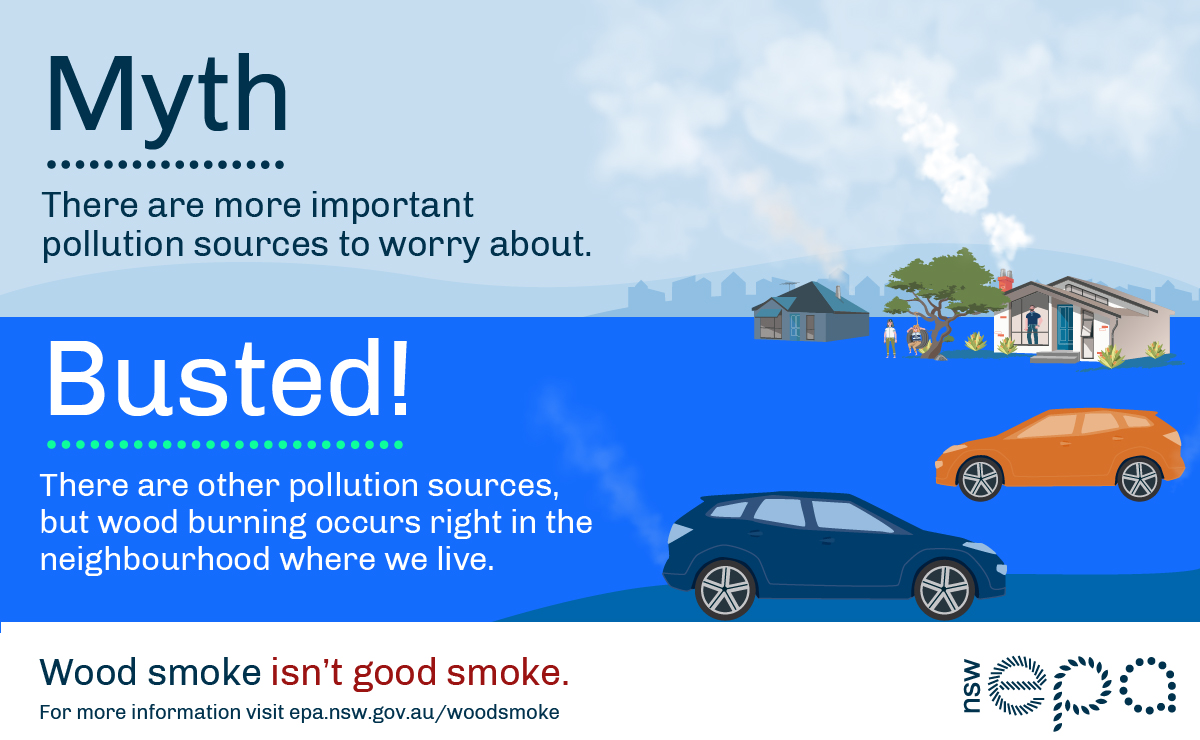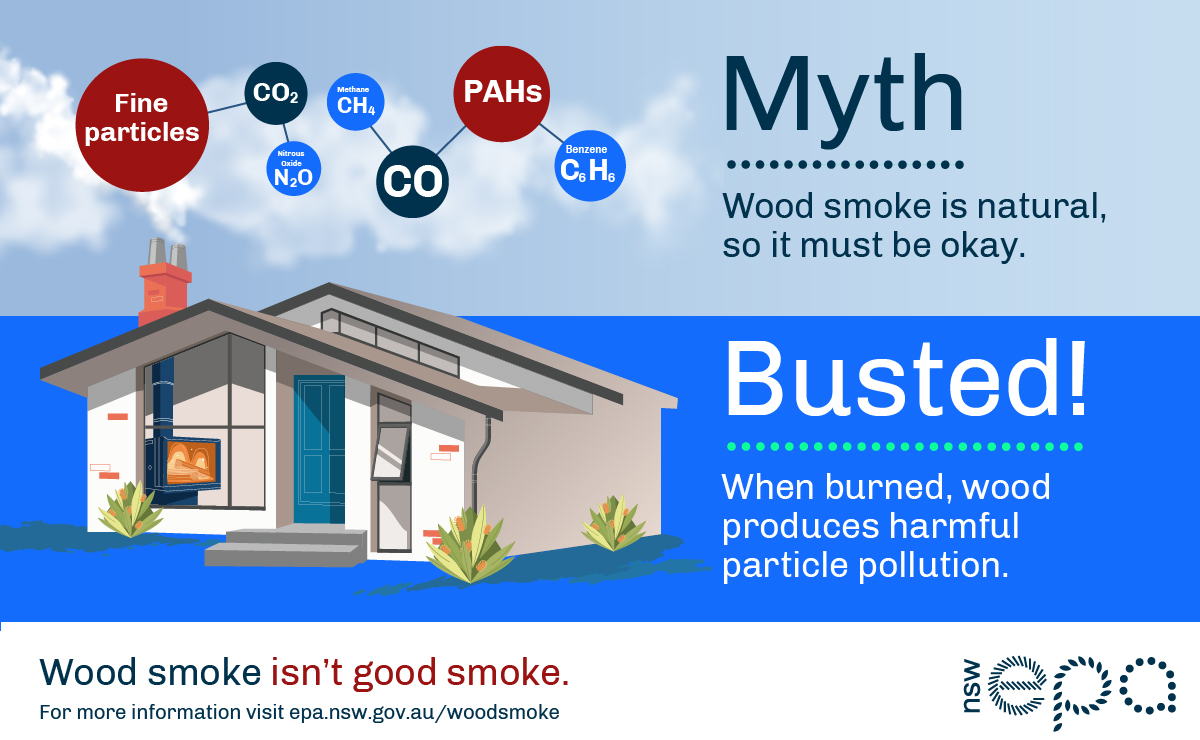
Wood-fired Heaters and Woodsmoke
 To install a wood burning heater in your house, you must first seek Council approval under the Local Government Act. Some parts of the Hawkesbury City Council area are not appropriate for wood burning heaters. It is recommended that you contact Council prior to purchasing the heater.
To install a wood burning heater in your house, you must first seek Council approval under the Local Government Act. Some parts of the Hawkesbury City Council area are not appropriate for wood burning heaters. It is recommended that you contact Council prior to purchasing the heater.
Under the Protection of the Environment regulation, all wood heaters and the accompanying flues must comply with Australian Standard AS4012 and A4013. The flue must be suited to the heater so that the system can operate without causing visible smoke.
The NSW Office of Environment and Heritage estimate that in some towns and cities in NSW, around 30% of total annual emissions of fine particulate matter (PM2.5) are emitted from wood-burning heaters. On a winter weekend, wood-burning heaters may be responsible for more than 60% of fine particle pollution. However, a large part of this is caused by the user, and the air control.
As a general rule of thumb, if you can see or smell smoke, then you are not operating your wood heater or open fireplace correctly and are impacting your neighbours and family.
To download the application form to install a wood heater (page 2 point 6), please click here.
If you decide to seek approval for the installation of a wood heater in your home, you should choose a wood heater with a particulate emissions factor of less than 1g/Kg.
If your wood heater is older than 20 years, it would no longer comply with current particulate emission regulations and is it strongly recommended that you replace the wood heater with alternative cleaner heating methods or a new wood heater with a particulate emission factor of less than 1g/Kg.
A list of certified wood heaters and their emission rating can be found here or on the specification sheet when purchasing a wood heater.
Reducing Winter Air Pollution
Hawkesbury City Council residents are being asked to help improve winter air quality by checking they are using wood heaters correctly. As temperatures drop and winter sets in, the incorrect use of wood fire heaters can seriously affect our air quality.
On colder weekends, woodsmoke particles from inefficient heaters float in the air and can be seen as a smoke haze that sometimes sits over built up areas. Not only is this sort of pollution unattractive, it can also be bad for our health.
Woodsmoke can cause breathing difficulties, especially for people suffering existing respiratory conditions, such as asthmatics, and for very young children and frail older people. There is also evidence that smoke pollution can cause cardiac problems.
But we can all help reduce the amount of woodsmoke pollution this winter by using aged dry wood and running our heaters properly.
Some simple steps to reduce woodsmoke pollution are:
- Don’t let your heater smoulder overnight – keep enough air in the fire to maintain a flame.
- Burn only dry, aged hardwood in your wood heater. Unseasoned wood has lots of moisture, which causes a fire to smoke.
- Store your wood under cover in a dry, ventilated area. Freshly cut wood needs to be stored for at least eight to twelve months.
- Never burn rubbish, driftwood or painted or treated wood. These are sure to pollute the air and can produce poisonous gases.
- When lighting a cold heater, use plenty of dry kindling to establish a good fire quickly.
- Use several small logs rather than one large log and stack them loosely in your heater, so air can circulate around them. Don’t cram the firebox full.
- Keep the flame lively and bright. Your fire should only smoke when you first light it and when you add extra fuel. Open the air controls fully for 5 minutes before and 15 to 20 minutes after reloading the heater.
- Check your chimney regularly to see how well your fire is burning. If there is smoke coming from the chimney, increase the air supply to your fire.
- Have the chimney cleaned every year to prevent creosote build-up.
- If you are buying a wood heater, make sure it has a compliance plate showing it meets the Australian Standard for pollution emissions (AS/NZS 4013:2014) and efficiency (AS/NZS 4012:2014). If it doesn't you might consider upgrading your heater to a newer more efficient model or changing to an alternative heating source.
It’s the responsibility of all wood heater owners to follow these easy steps and minimise the harmful effects of smoke pollution on their neighbours and the environment.
Consider your indoor air quality
It is always important to ensure that fresh air enters your living spaces when operating a wood heater. This is to reduce the risk from exhaust fumes entering your house and preventing a carbon monoxide buildup. Smoke and particles may enter the house when the door of the heater is opened. Consider closing off sleeping rooms to improve air quality. Consider operating an air filter in the house.
Further Information:
- What you can do about wood smoke pollution
- Call the Environmental Health branch on (02) 4560 4444
- Information on how to save energy, reduce your bills, make your home more comfortable and find available assistance can be found here .
Page ID: 157112




